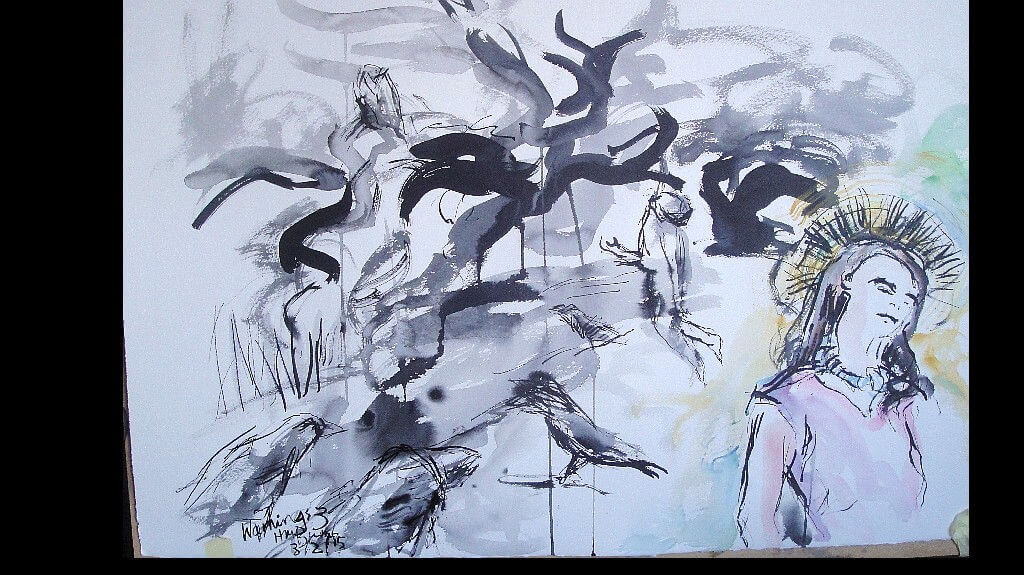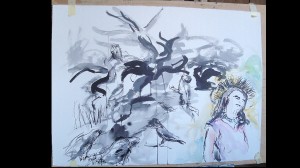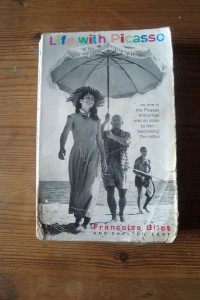On Friday of this week before I started the work on ‘Woven landscape’ shared on the previous blog post, I received some very exciting post via snailmail. This is a story written in the 1930’s about the Gosforth Cross and other Viking relics in St.Mary’s church Gosforth. My husband told me about it as we walked through Eskdale on Monday evening of our stay there. He had read the book a very long time ago but didn’t have a copy any longer. With the wonders of modern technology to hand later on in the pub we were able to order a signed original hardback copy and that is what I received on Friday morning. It is fascinating stuff! It has informed my response in the ‘Woven landscape ‘ piece, and I haven’t finished reading it yet, I have that treat in store!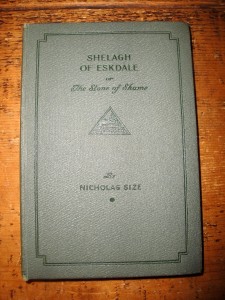
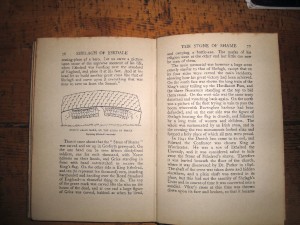
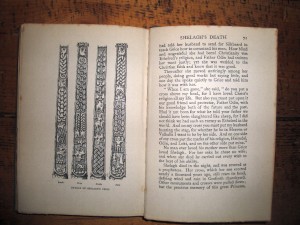
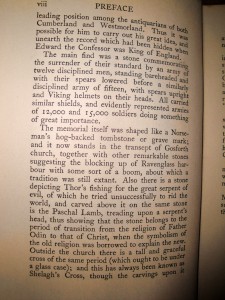
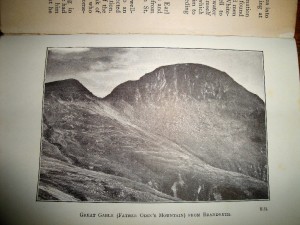
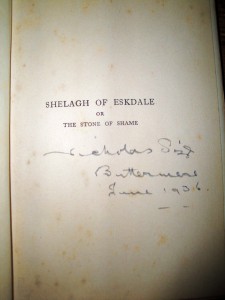
Monthly Archives: February 2015
AI canvas mixed media piece ‘Woven Landscape’
Last Thursday and Friday I knew it was time to go back in the studio and bring my on site sketches and previous explorations of the Vanaheim theme, shared in this blog, together into some kind of developmental piece. I’d prepared some tissue and emulsion collages on A3 so tore these and glued them to my A1 canvas to give the distressed surface I was looking for, all the while debating with myself ‘Shall I draw or paint?’. I’d already painted Frejyr’s necklace at Christmas and decided rather that paint it again that I’d cut it off it’s stretcher and collage that on too. This all happened on Thursday. I even tried burning the edges of the Frejyr necklace painting, but that didn’t work too well. Then on the Friday I started to draw with graphite stick and soft pencil the motif of the Freyr knitting drawing I’d made previously based on Jen Thompson knitting of the same name. This seemed to work. Then I started to include images of Great Gable, Odin’s mountain, which I will talk about in another post and the intriguing woven motif I’d sketched from the base of the Gosforth cross which I’ve just shared on a previous blog. I stopped earlier than normal and now I’m thinking ‘that’s it’ . Letting it all settle with me awhile. I used a little water-colour on top of the graphite but that was all.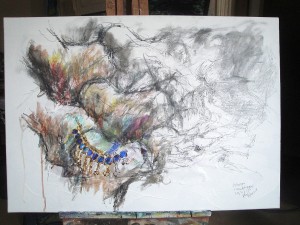
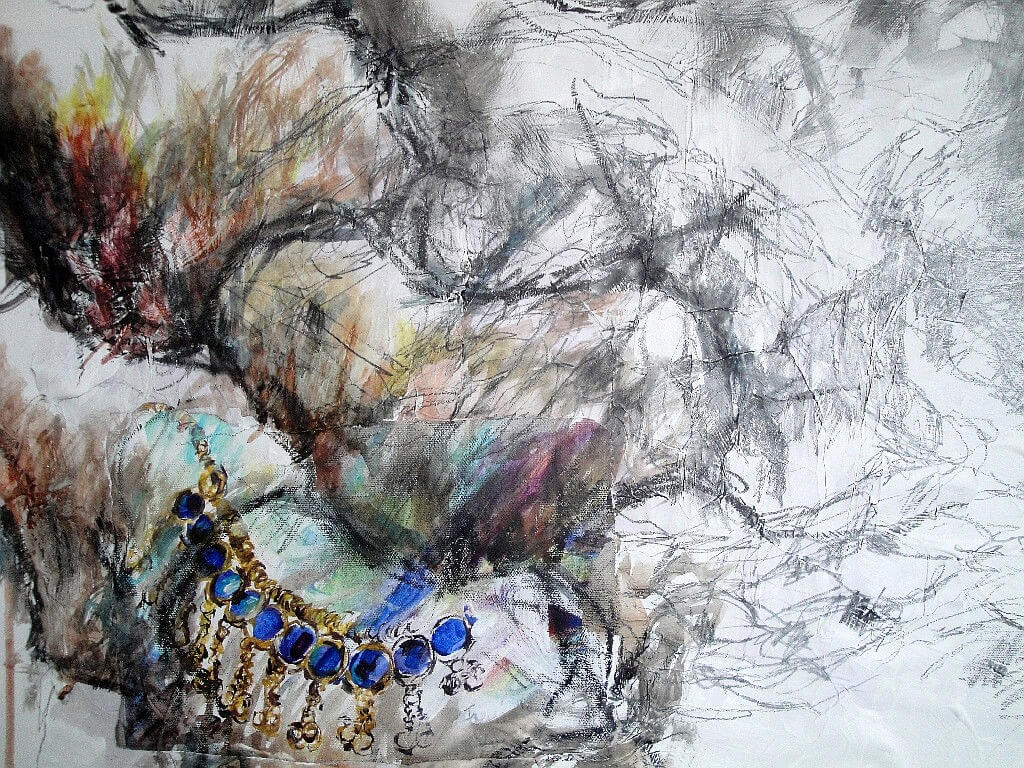
Gosforth cross artwork: on site sketches and develpoment
Here are the sketches made on site at this wonderful Viking cross last Tuesday. I was fascinated by the horse and rider motif on one side and this was my first sketch. The red sandstone itself is covered in moss and lichen and the other side curiously not. I spent a little while on this sketch before moving onto the other explorations which you can see. The interlocking pattern denoting the trunk of the tree of life Yggdrasil held me most. I Iost all track of time and space when making that. A strange connected sensation. I knew this would be the one that would find its way into my work even as I made it. I was standing very close to the cross, able to touch it and immerse myself in the experience. The bare trees throw the piece into sharp relief against the sky. The clouds gradually cleared as I worked. Click images to enlarge and to see my marks more clearly.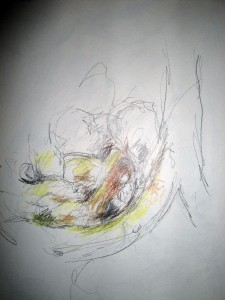
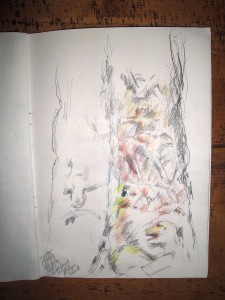
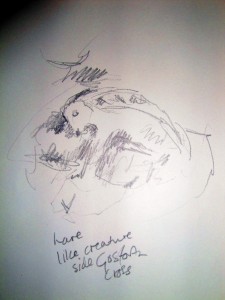
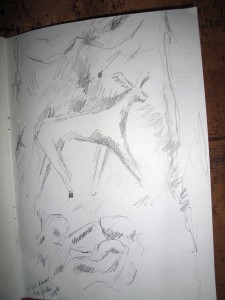
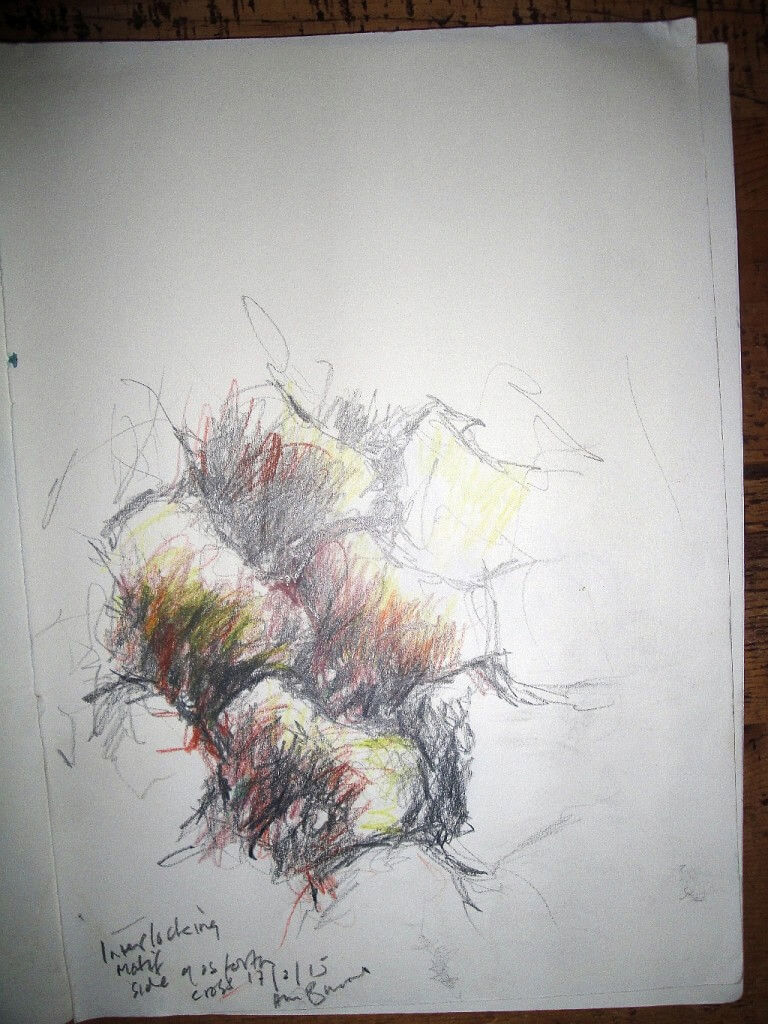
Gosforth Cross visit
I was there for about an hour and twenty minutes only, I distinctly remember hearing the church bell chime eleven, then time took on a different quality as I drew and the next thing I knew it was sounding twelve o.clock. I became fascinated by the woven pattern at the base which represent the tree of life Yggdrasil in Norse myth. I have been assigned the realm Vanaheim to respond to visually for my collaboration with Cambridge based arts group Artipeeps. I have been struggling to visualise anything concrete when working on this apart from Frejyr’s necklace which I have painted and discussed in earlier blog posts. This cross has certainly given me real food for thought. I was able to touch it and get up close and personal with a carving made by Viking craftsmen on the site it was intended for. I am still processing it all and will be for some time I think. I made a large mixed media drawing interpreting it all this week which I will share soon as well as the sketches I made on site. Please click to enlarge, well worth doing when it works!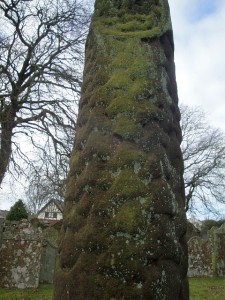
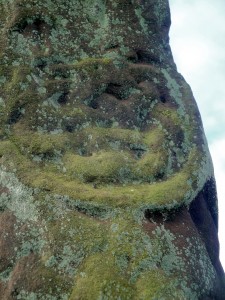
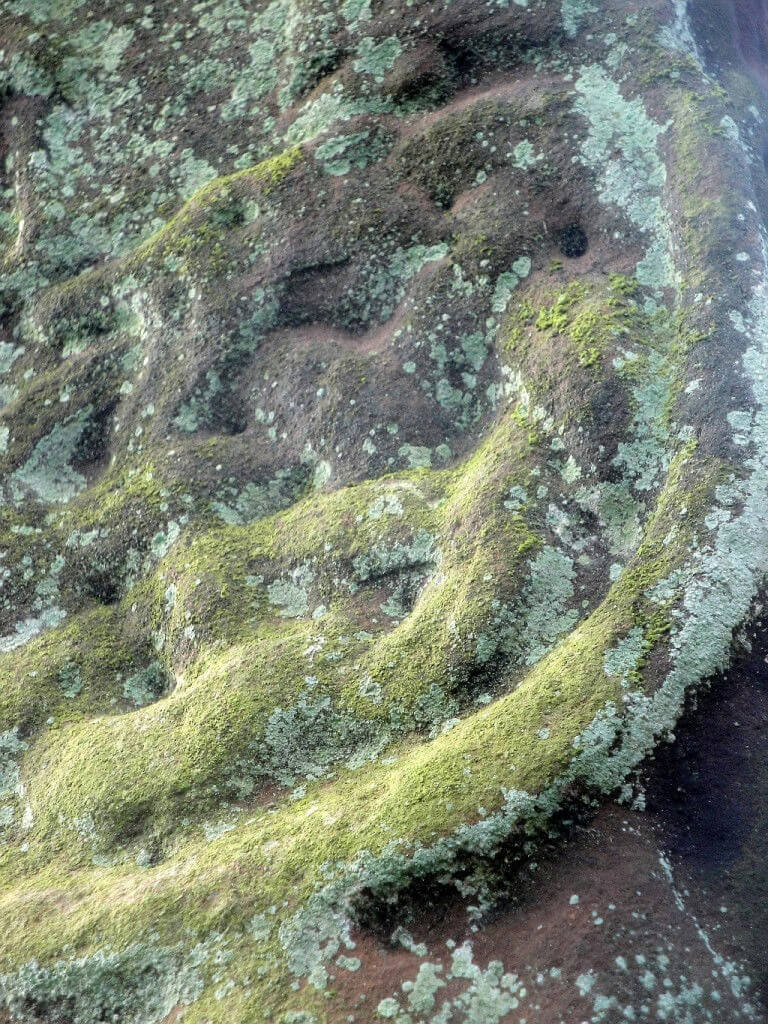
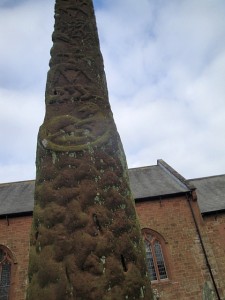
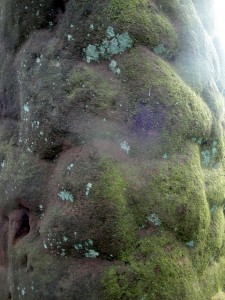
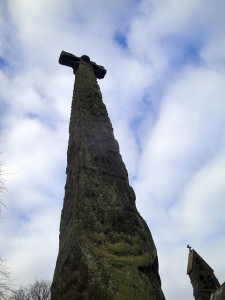
Gosforth Cross visit
Hi there folks, am excited to share images and thoughts on my recce to the Gosforth Cross in Cumbria, England last week. It was over 40 years ago that I was here last, when as a sixth former I came especially to draw this very special artefact. I had thought I wouldn’t be able to get there this time as plans and arrangements fell through at every turn. However, as so often I find once I let go of trying to control events, I was able to arrange some drawing time there on a brief visit to my favourite valley of Eskdale. I’d prepared all my drawing things before leaving and just hoped for dry weather on the Tuesday morning as I drove towards St.Mary’s church Gosforth where it stands. Here are some shots of the context and the cross itself with it’s fascintating mix of Christian and Viking iconography from 920-950 AD . Don’t forget to click images to enlarge, some work some don’t but the detail is great when it does!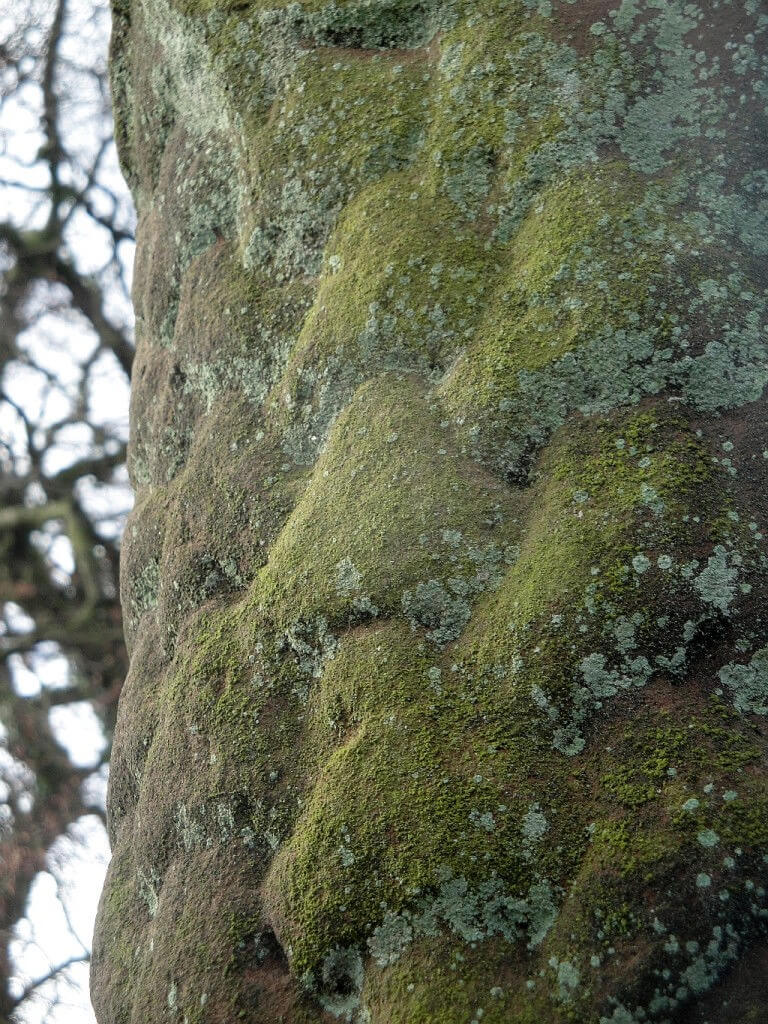
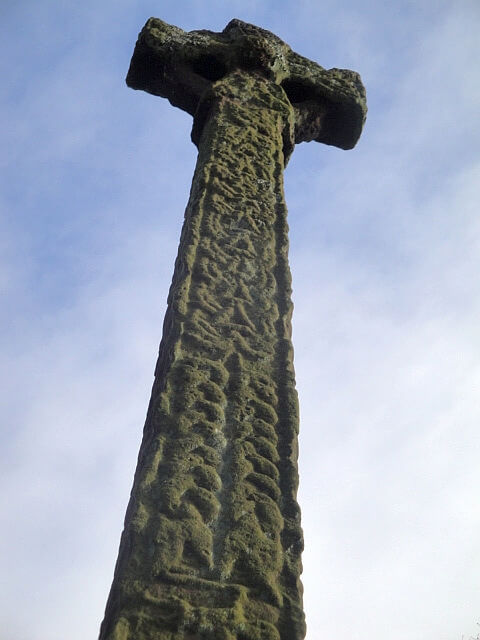
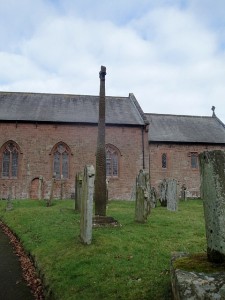
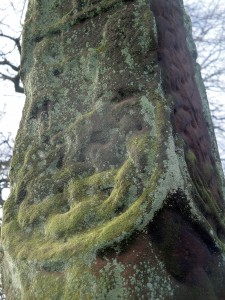
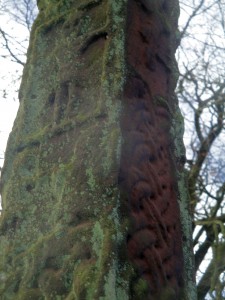
Frejya’s disappearing necklace, pastel pencil on tissue collage
I made this piece on Tuesday in response to my Vanaheim explorations for the Norse myth collaboration for the Cambridge based arts group Artipeeps. I’ve been drawing the Norse motifs by knitter Jen Thomson who has also been assigned to the Vanaheim realm, which you can see on earlier posts on this blog. Today I decided to take the creative risk of merging the knitting with the imagery of Frejya’s necklace that I painted at Christmas. I had the drawings arranged round my studio as well as the little painting to contextualise what I’m trying to do in a visual way. I’d made the tissue paper and print surface last Wednesday with one of my Year 13 students after school, so it was there waiting for me. The pastel pencil marks felt like knitting as I progressed with the drawing. I had started with the necklace and drew the knitted cave-like motif on top. The next stage is to go to Gosforth cross in Cumbria which is rich in real Viking motifs and draw on site to provide resource material to go into drawings and designs for my final piece. Watch this space! Half term next week so I can get on it! Don’t forget to click on images to enlarge especially last ones to see marks more clearly.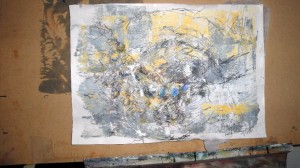
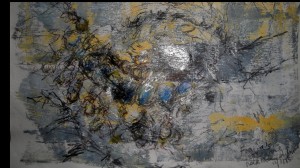
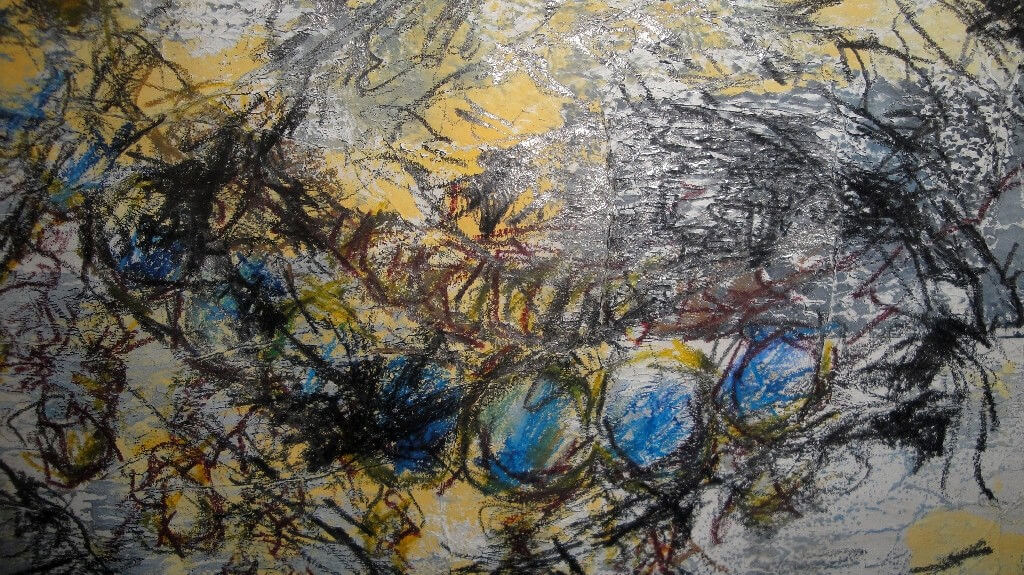
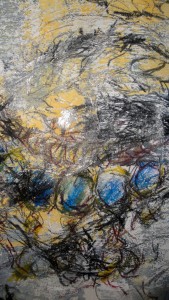
Warnings 3, final drawing in indian ink and watercolour A1
Francoise Gilot, cover ‘Life with Picasso’
Warnings 3, indian ink and watercolour drawing A1
I made this final drawing in a series of 3 in response to Kate Garrett’s poem ‘Warnings’. I’ve shared the previous pieces on this blog. I knew this final drawing was important but wasn’t sure how to approach it. I went to the park to meditate today, not the graveyard this time, and stayed open to where this might take me. I knew I wanted to include trees and the hanging figure. The trees I had drawn at the graveyard last week that I thought I could use were on the wrong side linking back to the first drawing. So I decided to make the trees a loose interpretation of the position of the trees in the first ‘Warnings’ drawing, so it kind of followed on. The drawings of the crows came from the graveyard sketches made last week, so felt real. The hanging figure emerged then, and last of all the female protagonist. She came from an image of Francoise Gilot on the front of a book I have ‘Life with Picasso’. I know the image so well, she is walking along the beach under an umbrella held by the master shading her from the sun. The drawing is a very loose interpretation of that. She was the only woman to have left Picasso, I find her fascinating. I had thought she might be Julie Driscoll who I have been listening to recently, but no, it had to be Francoise. So that’s the story. I always stay open even in the middle of working and have no doubt the marks will say what I want them to.